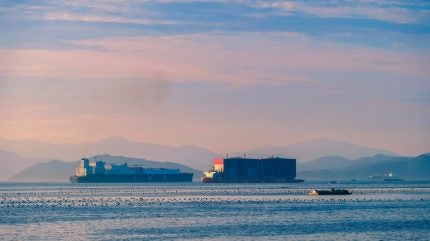
An increasing number of large-scale LNG receiving terminal initiatives in South Korea have been cancelled due to a decrease in LNG demand and the potential risks of overinvestment, according to research from the Institute for Energy Economics and Financial Analysis (IEEFA).
The body’s analysis has revealed a growing disparity between LNG import infrastructure and demand. The South Korean Government’s climate goals predict that the proportion of LNG-fired power generation will decrease to 11.1% by 2038, down from 26.8% in 2023.
Using IEEFA’s calculations, the utilisation of regasification facilities, already among the lowest globally, will decline to 19.78% in 2036 from 29.48% in 2023.
In early 2024, four LNG terminal projects with a collective regasification capacity of 11 million tonnes per annum (mtpa) were postponed or terminated due to insufficient economic advantages and escalating construction expenses.
These deferred or cancelled projects represent roughly 29% of the total proposed import capacity in the Asian nation.
IEEFA estimates South Korea’s 11 planned LNG terminals could cost around $8.7bn (11.89trn won) by 2031. These terminals would contribute to approximately 37mtpa of regasification capacity, increasing the national capacity from 153mtpa to 190mtpa.
IEEFA has also noted several delays to LNG projects over the past nine months.
In April 2024, state-run energy company KOGAS revealed it would lease the new Dangjin LNG terminal space to direct LNG importers. In the same month, Korea Southern Power cancelled its Hadong 180,000 metric tonnes (mt) LNG terminal storage tank project due to a lack of economic benefits.
In July 2024, Korea Midland Power scrapped its Boryeong LNG terminal buildout plan due to rising costs and declining demand.
According to the International Energy Agency (IEA), as of 2022, Korea ranked as the world’s third-largest LNG importer, following Japan and China, accounting for 12% of global imports.
However, the country’s LNG imports declined by 4.9% in 2023, as high LNG prices placed downward pressure on power and city gas demand amid increased nuclear and renewable power generation, IEEFA states.
South Korea intends to diversify its LNG import sources to reduce the risk of supply disruptions caused by regional conflicts and production issues, as per the IEA.
However, South Korea maintains that fossil fuels are necessary to enhance national energy security. President Yoon Suk Yeol’s administration recently revealed plans to conduct initial drilling to investigate potential oil and gas deposits in the East Sea, with estimated reserves of up to 14 billion barrels.



